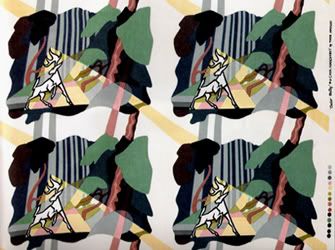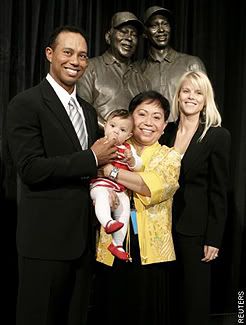A plea from Pope Benedict XVIThe Sistine ChapelPope Benedict XVI recently
addressed a group of invited artists assembled at the Sistine Chapel. He said:
Beauty, whether that of the natural universe or that expressed in art, precisely because it opens up and broadens the horizons of human awareness, pointing us beyond ourselves, bringing us face to face with the abyss of Infinity, can become a path towards the transcendent, towards the ultimate Mystery, towards God. [1]
Through a dogged
study of film art, I have tried to show the inevitable relationship between art and the transcendent. I have also demonstrated, I hope successfully, that artists are free to chose their own transcendent, even to make it up to suit their perceived needs, but that deviations from the true transcendent degenerates into chaos, like Bruce Elder's
films, or forces the artist to
construct his own demise, like Rothko. Clever artists who manage to avoid some of these pratfalls simply end up making mediocre, unambitious works.
But, I kept trying to put beauty into my analyses. Elder's films have moments of illuminating beauty, which I think Pope Benedict correctly calls "a seductive but hypocritical beauty." The sordid chaos in Elders' films is so overwhelming that the predominant imagery that remains is one of ugliness and not of beauty. Rothko couldn't make discernible, understandable imagery; he was the master of illusions. So his work shone because he refrained from adding real elements to his work, and relied on paint: its substance, texture, light and tones. It's like someone trying to make beauty out of fireworks. If he had put real figures into his paintings, I bet they would have taken the forms of the devils of his psyche.
Pope Benedict quotes another pope in his speech, Paul VI, who addressed artists in 1964 pleading with them to join forces with the true transcendental God in their creations. Pope Paul VI says:
We need you. We need your collaboration in order to carry out our ministry, which consists, as you know, in preaching and rendering accessible and comprehensible to the minds and hearts of our people the things of the spirit, the invisible, the ineffable, the things of God himself. And in this activity … you are masters. It is your task, your mission, and your art consists in grasping treasures from the heavenly realm of the spirit and clothing them in words, colours, forms – making them accessible.
This has always been the case. Christianity has always needed its artists, not just to disseminate its teachings in image form, but to capture the essence, the transcendence, of those messages. Even at the level of simple inquiry, Pope Benedict affirms that this journey is "a path of beauty which is at the same time an artistic and aesthetic journey, a journey of faith, of theological enquiry." Faith, inquiry and beauty are intertwined. He continues: "The way of beauty leads us, then, to grasp the Whole in the fragment, the Infinite in the finite, God in the history of humanity." Beauty leads to knowledge, to discernment and revelation, to truth.
Pope Benedict invited this current crop of world-famous artists to join him in this trajectory of art through beauty to the true God. My pessimism in this subject forces me to say that artists will not heed much of what he says, being so focused on their own needs and "visions." But, if one or two listen and respond, then perhaps his speech will not be in vain.
But, Pope Benedict’s efforts to connect with artists at their den of the infamous 2011
Venice Biennale leads to precisely the kind of place where beauty is "seductive but hypocritical…[a beauty] that rekindles desire, the will to power, to possess, and to dominate others… A beauty which soon turns into its opposite, taking on the guise of indecency, transgression or gratuitous provocation."
It is better for him to seek true artists and bring them to him, rather than he compromise and hope to meet them at the biennale lair.
[1]
Full Text of Pope Benedict XVI's Address to Artists


























